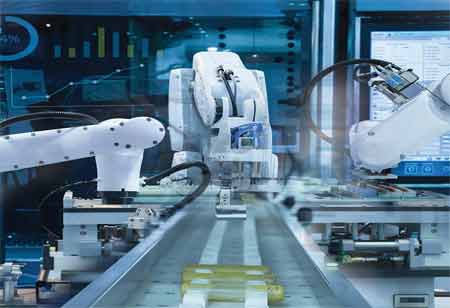Thank you for Subscribing to Electrical Business Review Weekly Brief
I agree We use cookies on this website to enhance your user experience. By clicking any link on this page you are giving your consent for us to set cookies. More info
Exploring the Future of the Wire and Cable Industry
The wire and cable industry evolves constantly, necessitating manufacturers to adapt to complex design considerations and emerging trends.

By
Electrical Business Review | Tuesday, October 28, 2025
Stay ahead of the industry with exclusive feature stories on the top companies, expert insights and the latest news delivered straight to your inbox. Subscribe today.
FREMONT, CA: Understanding evolving design considerations and industry trends is crucial for wire and cable manufacturing success, as factors like technological advancements and sustainability concerns shape the production landscape.
Design Considerations:
Performance and Reliability: The foremost consideration in wire and cable design is ensuring optimal performance and reliability. Cables must meet stringent conductivity, insulation, and durability standards to withstand various environmental conditions and operational stresses. Manufacturers prioritize materials and construction techniques that enhance reliability and minimize the risk of failure.
Flexibility and Adaptability: Wire and cable designs must accommodate diverse needs for flexibility and adaptability with applications ranging from telecommunications to automotive systems. Flexible cables are essential for installations in tight spaces or applications requiring frequent bending and flexing. Additionally, modular designs enable customization to meet specific requirements across industries.
Miniaturization and Space Efficiency: As devices become increasingly compact and portable, there's a growing demand for smaller, lightweight cables with high data transmission capabilities. Miniaturization drives innovations in cable design, prompting manufacturers to develop ultra-thin conductors and insulation materials without compromising performance. Space-efficient designs facilitate seamless integration into modern electronics and appliances.
Electromagnetic Interference (EMI) Shielding: Effective EMI shielding prevents signal distortion and data corruption in high-EMF environments like industrial and medical institutions. Wire and cable designs employ shielding materials and procedures to reduce electromagnetic interference and maintain signal integrity and dependability in delicate applications.
Environmental Sustainability: Increasing awareness of ecological issues prompts wire and cable manufacturers to prioritize sustainability in design and production processes. This includes utilizing eco-friendly materials, reducing energy consumption during manufacturing, and implementing recycling initiatives. Sustainable design practices minimize environmental impact and resonate with environmentally conscious consumers and businesses.
Emerging Trends:
Integration of Smart Technologies: The proliferation of Internet of Things (IoT) devices and intelligent infrastructure drives the adoption of cables with integrated sensors, monitoring capabilities, and data transmission functionalities. Smart cables enable real-time diagnostics, predictive maintenance, and enhanced connectivity, revolutionizing various industries, including healthcare, transportation, and energy management.
High-Speed Data Transmission: The need for high-speed data transfer in data centers, multimedia applications, and telecommunications is driving the rising demand for cables to sustain highly rapid data transmission rates. Advances in coaxial, twisted pair, and fiber optic connections, which meet the bandwidth demands of contemporary digital ecosystems, make Gigabit and Terabit data speeds possible.
Enhanced Safety and Fire Resistance: Safety standards and regulations drive the development of cables with improved fire resistance and reduced smoke emissions. Flame-retardant materials and halogen-free formulations enhance the fire safety of wires, particularly in building construction, automotive, and aerospace applications where fire hazards pose significant risks to life and property.
Automation and Robotics Integration: The rise of automation and robotics in manufacturing and industrial automation necessitates cables designed to withstand dynamic motion, torsion, and repetitive flexing. Robotic cables feature rugged construction, abrasion-resistant coatings, and specialized connectors to ensure reliable performance in harsh operating environments, supporting the seamless operation of robotic systems.
5G Infrastructure Deployment: The rollout of 5G wireless networks drives demand for high-capacity, low-latency fiber optic cables and high-frequency coaxial cables to support the dense network of small cells and base stations. Wire and cable manufacturers collaborate with telecommunications providers to develop solutions that enable the rapid deployment and scalability of 5G infrastructure, facilitating faster data speeds and improved network performance.








